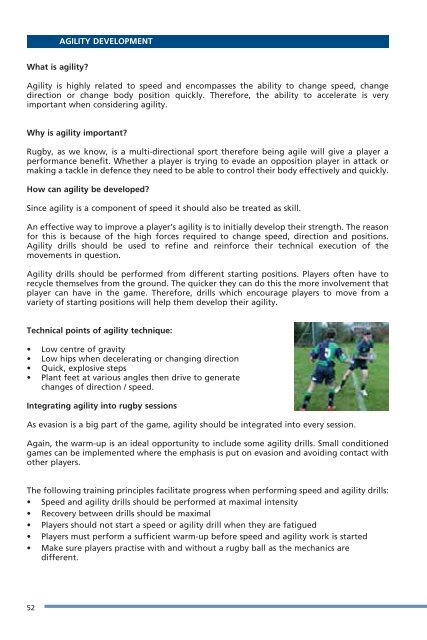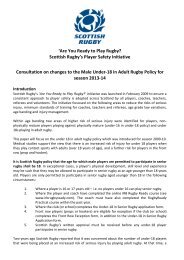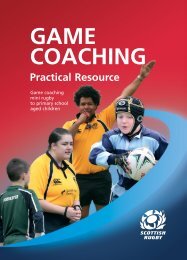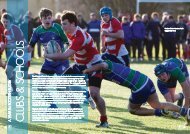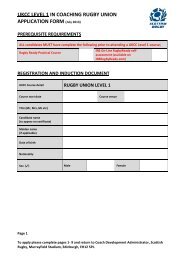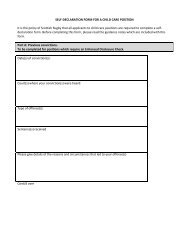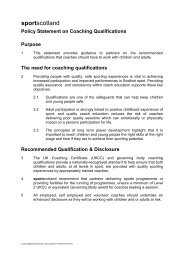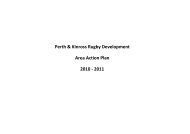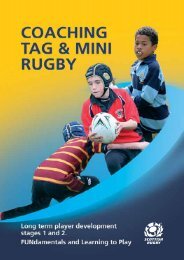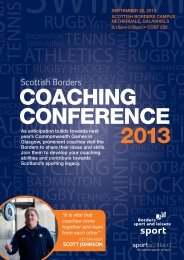LTPDst3cover.qxd (Page 1) - Scottish Rugby Union
LTPDst3cover.qxd (Page 1) - Scottish Rugby Union
LTPDst3cover.qxd (Page 1) - Scottish Rugby Union
- No tags were found...
Create successful ePaper yourself
Turn your PDF publications into a flip-book with our unique Google optimized e-Paper software.
AGILITY DEVELOPMENTWhat is agility?Agility is highly related to speed and encompasses the ability to change speed, changedirection or change body position quickly. Therefore, the ability to accelerate is veryimportant when considering agility.Why is agility important?<strong>Rugby</strong>, as we know, is a multi-directional sport therefore being agile will give a player aperformance benefit. Whether a player is trying to evade an opposition player in attack ormaking a tackle in defence they need to be able to control their body effectively and quickly.How can agility be developed?Since agility is a component of speed it should also be treated as skill.An effective way to improve a player’s agility is to initially develop their strength. The reasonfor this is because of the high forces required to change speed, direction and positions.Agility drills should be used to refine and reinforce their technical execution of themovements in question.Agility drills should be performed from different starting positions. Players often have torecycle themselves from the ground. The quicker they can do this the more involvement thatplayer can have in the game. Therefore, drills which encourage players to move from avariety of starting positions will help them develop their agility.Technical points of agility technique:• Low centre of gravity• Low hips when decelerating or changing direction• Quick, explosive steps• Plant feet at various angles then drive to generatechanges of direction / speed.Integrating agility into rugby sessionsAs evasion is a big part of the game, agility should be integrated into every session.Again, the warm-up is an ideal opportunity to include some agility drills. Small conditionedgames can be implemented where the emphasis is put on evasion and avoiding contact withother players.The following training principles facilitate progress when performing speed and agility drills:• Speed and agility drills should be performed at maximal intensity• Recovery between drills should be maximal• Players should not start a speed or agility drill when they are fatigued• Players must perform a sufficient warm-up before speed and agility work is started• Make sure players practise with and without a rugby ball as the mechanics aredifferent.52


